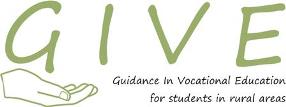
Guidance In Vocational Education for students in rural areas – GIVE
Project number: 2011-1-PL1-LEO05-19885
Implementation period: 02.2012 – 01.2014
Project description
The aim of the project was to increase awareness and opportunities to use modern technologies to gain professional knowledge with the use of social networking sites. As a result of the rapid development of Web 2.0 services and the need for attractive, high-quality curriculum, slowly formes a movement toward integration of education and social media applications such as blogs, Twitter and Facebook. Educational institutions are increasingly aware that these applications can be effectively integrated into their educational systems, but few are actually using them to innovate training systems.
Equipment VET professionals with the skills to deliver the knowledge of using social media provided attractive opportunities for education and vocational training and encourage youth to participate in the learning process. The main result of the project is a multi-dimensional GIVE e-learning platform, the contents of which rise as a result of the transfer Creina tools, and research carried out within the project. A characteristic feature of the platform is its integration with Web 2.0. During the project, the platform was tested by VET professionals who worked with young people living in rural areas and now the platform is available to all VET professionals to place any of the content of teaching. In addition, the LMS Platform User Guide has been developed – it presents the work with the platform step by step. More information can be found on the project website: arch.danmar-computers.com.pl/give.
Partners
Danmar Computers – Rzeszow, Poland (coordinator)
BD Center – Rzeszow, Poland
CENTRO PER LO SVILUPPO CREATIVO DANILO DOLCI – Palermo, Italy
Ciberespacio SL – Madrid, Spain
KNOW AND CAN ASSOCIATION – Sofia, Bulgaria
OAKE Associates Ltd – Manchester, UK
There were also 10 associated partners involved in the project.

